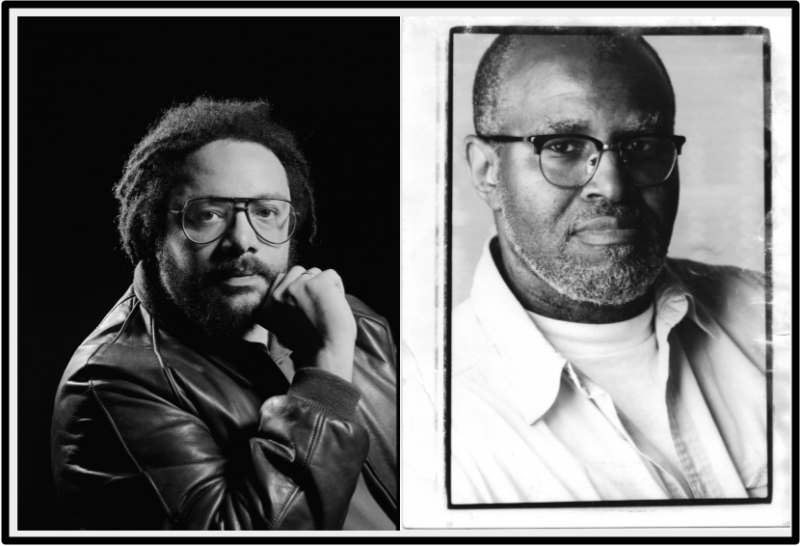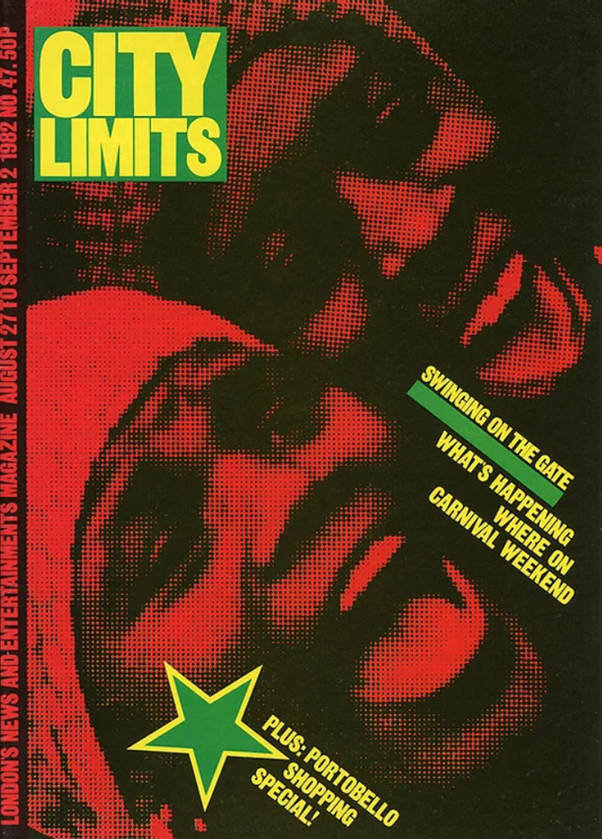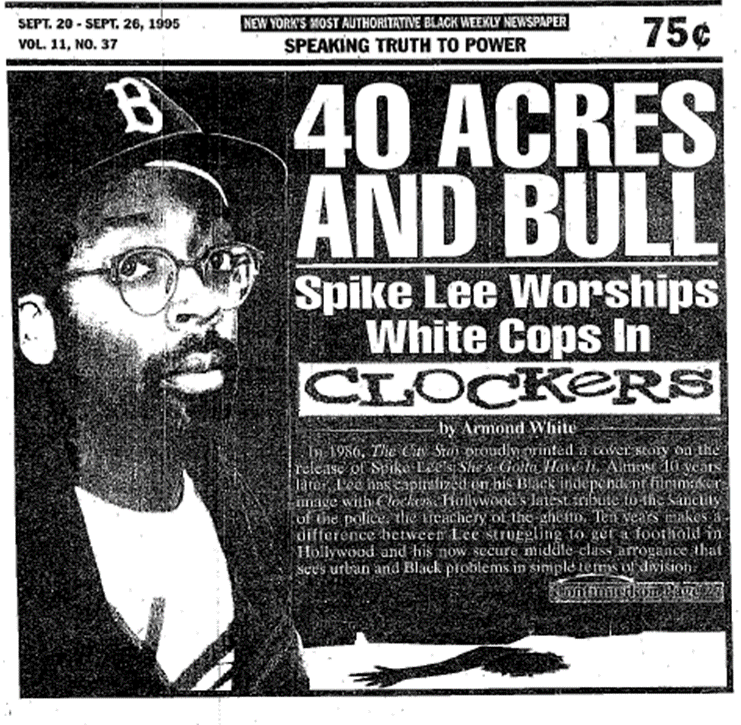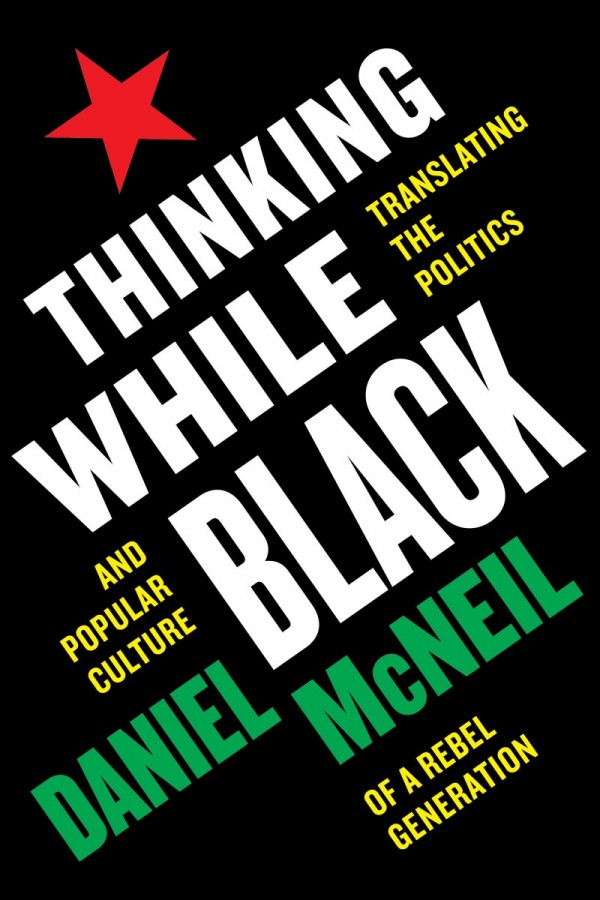Rebel Music

Thinking While Black is a book about the work and ideas of two celebrated and controversial writers who have invited and challenged their readers to do some deeper and fresher thinking about politics and popular culture. It pays particular attention to the prominent British intellectual Paul Gilroy, the notorious American journalist Armond White, and a political and cultural generation that came of age in the 1960s and ‘70s consuming rebel music, revolutionary film, and other forms of expressive culture created by world citizens and the descendants of enslaved individuals.

Left: Portrait of Paul Gilroy in 1991 (Photo: Paul Tozer). Right: Portrait of Armond White in 2000 (Photo: Chris Whitney). Image description: to the left is a black and white head shot of Paul Gilroy, a bearded Black man wearing a leather jacket and glasses, head resting on his arm and looking intently at the camera; to the right is a black and white head shot of Armond White, a Black man with a graying beard in an open-necked shirt and glasses, looking directly at the camera.
Working within and against American and British cultures that have stigmatized Black people and marked them as unworthy of love, soul rebels have consistently revealed how love can be a subversive gift and a significant public good. Thinking While Black considers, for example, how Gilroy and White were inspired by people who got together, often outside of conventional politics, to rock against racism and dismantle racial hierarchies in the 1970s. It demonstrates how they sought to change the terms of national conversations about race and racism in the 1980s and ‘90s by participating in multiracial networks that approached debate and disagreement as manifestations of solidarity, collegiality, and love. And, rather than dismissing their late style as the cranky, contrarian musings of “grumpy old men,” it provides some formative context for their strident critiques of corporate diversity statements, marketing hype and “multicultural snake oil” that veil state violence, material inequality, and the practices of extractive industries in the twenty-first century.
Over the past fifty years, Gilroy and White have consistently drawn attention to the precious resources of creative artists who conquer greedy and hostile culture industries or smuggle moments of dissidence into commodified cultures. Their cultural criticism pays little attention to the number of times a song is played on a streaming service or a film’s box office numbers. In contrast, it describes music, film, and other expressive cultures as rich and stimulating when they bring reality into focus, jolt audiences into some fresher and deeper thinking, and imagine and build worlds beyond capitalist systems of judgment and value.
In addition to being a story about people who refuse to treat culture as if it is merely a distraction from the “real” business of politics – or only has value when it can be successfully monetized – Thinking While Black is a tale of two critics who reject the pitfalls of strained seriousness. It pays close attention to the language and style of caustic and demanding critics who do not hide their frustrations with timid scholasticism and the banalities of dull, literal-minded, and sanctimonious journalism.
To transmit some of the sounds and rhythms that have inspired and provoked the creative artistry and activism of soul rebels, Black Atlantic intellectuals, and planetary humanists, I collaborated with Alador Bereketab – one of my co-hosts on the Black Studies Podcast – to develop a playlist to accompany the book.
Some selections in the playlist are informed by Gilroy’s appreciation for creative artists who paraded through London when he started going out listening to live music in the late 1960s and early ‘70s. Gilroy fondly recalls, for example, the magical evening he spent listening to Bob Marley singing “Get Up, Stand Up” at the Greyhound Pub on Fulham Road; countless hours of guitar practice accompanied by Jimi Hendrix and his electric church; and Curtis Mayfield’s willingness and ability to smuggle testaments of human creativity and liberation past the ethnic brokers and project-managing pimps of Blaxploitation films.
Other musical selections in this diverse playlist reflect Gilroy’s supplementary career as a music journalist at City Limits, an arts and events listing magazine in London that broke away from Time Out magazine when its owner abandoned the publication’s original cooperative principles and imposed changes to its collective working practices. In reviews that would be published alongside advertisements for Irish freedom festivals, conferences on socialist economics, and other initiatives that demonstrated the interrelationship and interdependence of cultural production and radical politics in the 1980s, readers of City Limits would find Gilroy discussing Black music that contested dispiriting and alienating work, state violence and historical amnesia. He would, for example, communicate the joy that made it difficult for him to write reviews after the birth of his first child, who was named after the legendary bass guitarist Marcus Miller. He would draw on the music of Linval Thompson to discuss an uncompromisingly critical view of domestic violence and male contempt for child-rearing. In addition, he would try to translate the power of live performances by Afrika Bambaataa, and the ideal communicative moments between artists and audiences that surpass anything the structures of the family could provide.

Front cover of City Limits, August 27-September 2, 1982 (Photo: Paul Trevor; design: David King). Image description: Slanted close-up of two jubilant, youthful faces on the front cover of a magazine in attention-grabbing color; also lists magazine contents: Swinging on the gate, What's happening where on carnival weekend, Plus: Portobello shopping special!
White was raised in a large, religious, working-class family in Detroit and the playlist includes tracks from Motown artists that inspired civic pride (as well as pain and heartbreak when Motown’s headquarters were moved from Detroit to Los Angeles). Whereas Gilroy went on an intellectual journey across the Atlantic Ocean in the 1980s and ‘90s to search out American music and writing to supplement his attempts to comprehend the experiences of Black Britons in contemporary Europe, White would engage with British music critics in the New Musical Express to mount an aggressive challenge to American media outlets that failed to transmit the realities and pleasures of their multiracial democracy. The playlist features white British artists such as Kirsty MacColl and Morrissey, and African American musicians such as Public Enemy and the Geto Boys, who were esteemed by White for their ability to convey the artistry, pain, beauty, vulnerability, and psychological angst of oppressed people when he was arts editor for the City Sun, a Brooklyn-based Black newspaper with the tagline “speaking truth to power.” It also features tracks from Prince and Michael Jackson, two of the serious pop artists that White admired for their ability to “spread out” and impose their vision on the world without sacrificing difficulty or “selling out” with cheap thrills, unedifying entertainment, and exploitative material.

Front page of the City Sun, September 20-26, 1995. Image description: Front page of a newspaper with a picture of the filmmaker Spike Lee wearing a baseball cap and looking through glasses and the headline, "40 Acres and Bull: Spike Lee Worships White Cops in Clockers"; price (75 cents), and the slogans "New Yorks' most authoritative Black weekly newspaper" and "Speaking Truth to Power" run across the top, the article begins beneath
Some of the tracks that speak to the life and work of White are not Gilroy’s cup of tea (and vice versa). The playlist also features some artists who have led Gilroy to wonder if Black music has declined and lost its moral authority, and some music from film soundtracks that have provoked White into railing against unimaginative, infantile, and overhyped cultural content that he associates with the regression of film culture and the closing of the American mind. In bringing together an eclectic mix of punk, reggae, soul and other musical genres, the playlist reveals some of the many tracks that have inspired and provoked dissonant, against-the-grain writers to write with verve and imagination about the critical and subversive gifts of love, the richness of lively and radical expressive cultures, and seriously soulful work. I hope you have as much fun listening to it as Alador and I had in compiling it!
Daniel McNeil's Thinking While Black: Translating the Politics and Popular Culture of a Rebel Generation is available September 27th, 2022. There will be an online launch for the book on October 6th and a Toronto in-person book launch on October 14th at the annual Black and Caribbean Book Affair hosted by the Blackhurst Cultural Centre

